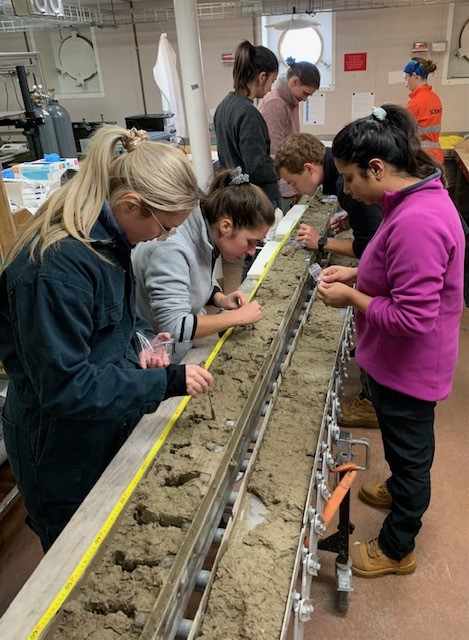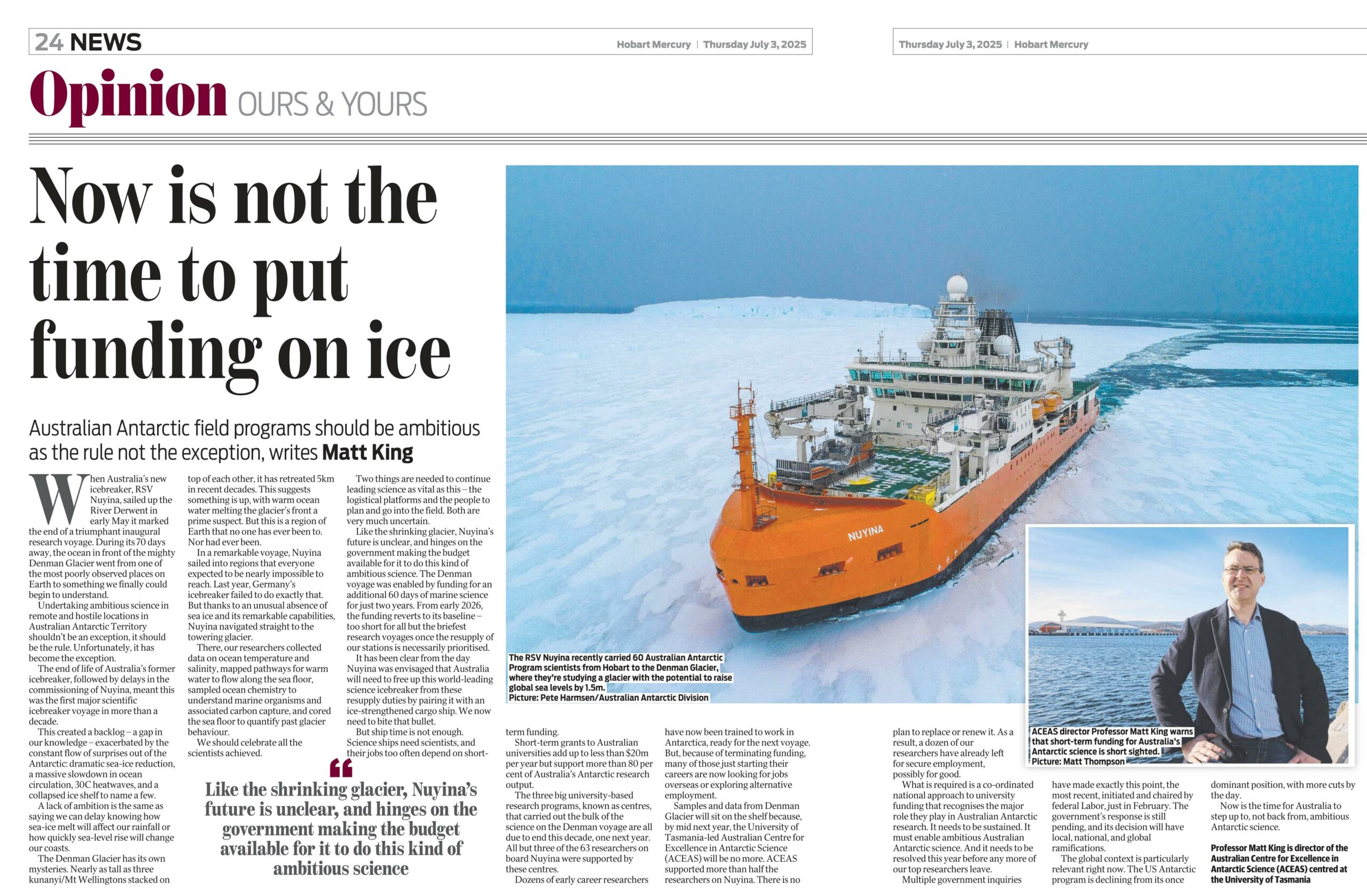
Team onboard RV Investigator sampling a kasten core (Image: Helen Bostock)
By Tom Williams (UTAS) and Helen Bostock (UQ)
To understand our changing climate today and improve predictions about future climate we need to have long climate records to compare to. But instrumental data only reach back a century, and we don’t have much data from remote regions of the world like Antarctica, so we need to look at natural climate archives like ice and sediment cores.
This is what we do as Paleoceanographers. Meaning ‘Ancient Oceanographers’, we use marine sediment cores to unravel how the oceans behaved in the past.
From reconstructing ocean temperatures, or the amount of life-giving nutrients in the surface ocean, to the origins and aftereffects of past mass extinction events, Paleoceanographers work to build up a long-term picture of Earth’s oceans and climate. To do this, we typically rely on sediment cores retrieved from the sea floor. The sediments in these cores are a mixture of dead marine organisms (microfossils), wind-blown dust, or rocks and minerals which have been eroded by rivers or – in the case of Antarctica – by ice and transported into the ocean. These sediments accumulate over decades and centuries, slowly forming layers that contain clues about past climate and ocean circulation.
Retrieving sediments from the sea floor is not easy, especially in remote and hostile settings like Antarctica. Fortunately, the R/V Investigator has a range of different coring systems that we can use to retrieve sediment cores. These include the Multicorer, which is able to retrieve multiple short cores at a time, each roughly half a metre in length. During the voyage we have also used the Kasten corer which is a 4 m rectangular corer that uses gravity to push into the sediments. We also retrieved a 15 metre long Giant Piston Core, which we hope will provide records stretching back as far as 1 to 2 million years into the past.
Once we have collected the sediment cores we can start to process them on the ship. For the Kasten cores this requires sampling the sediment immediately for a range of different analyses – including microfossils and aDNA (see last blog), but also grainsize, the chemistry and ice rafted debris (larger grains that can only be transported by icebergs). We also scan them for their magnetic susceptibility (which is the amount of magnetic minerals like iron in the sediment). This is a proxy for the amount of sediment in the core that has been sourced from Antarctica versus the amount of biological material such as microfossils.
The sediment cores we take as part of the Canyons expedition will allow us to reconstruct the history of ocean circulation, biological productivity, sea ice extent, and ice sheet expansion and contraction. We are particularly interested in studying past changes in Antarctic Bottom Water formation and circulation. Antarctic Bottom Water forms in just four locations around Antarctica – one of which is Cape Darnley. Antarctic Bottom Water flows down the slopes of the Antarctic continent and spreads north to fill much of the world’s deep ocean basins, flushing the deep ocean interior with oxygen and helping drive global ocean circulation. We hope the sediment cores will provide evidence of how the ice sheets and Antarctica Bottom Waters in Cape Darnley responded to past periods of warmth to provide insight into what the Earth might look like in the future. Changes in Antarctica have an impact on the entire world, altering the earth’s energy balance, and sea level rise, with up to 56 m of sea level rise stored in the Antarctic ice sheet.


